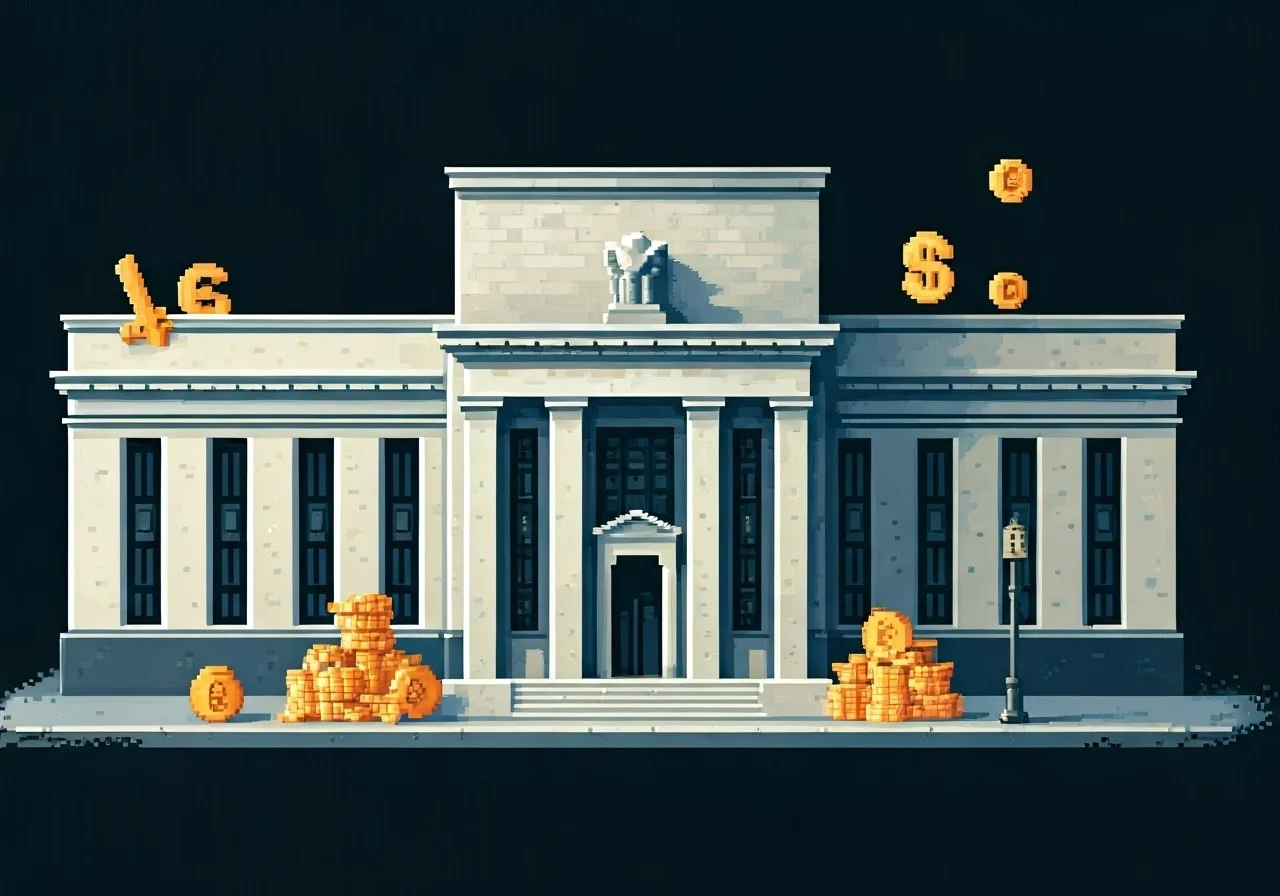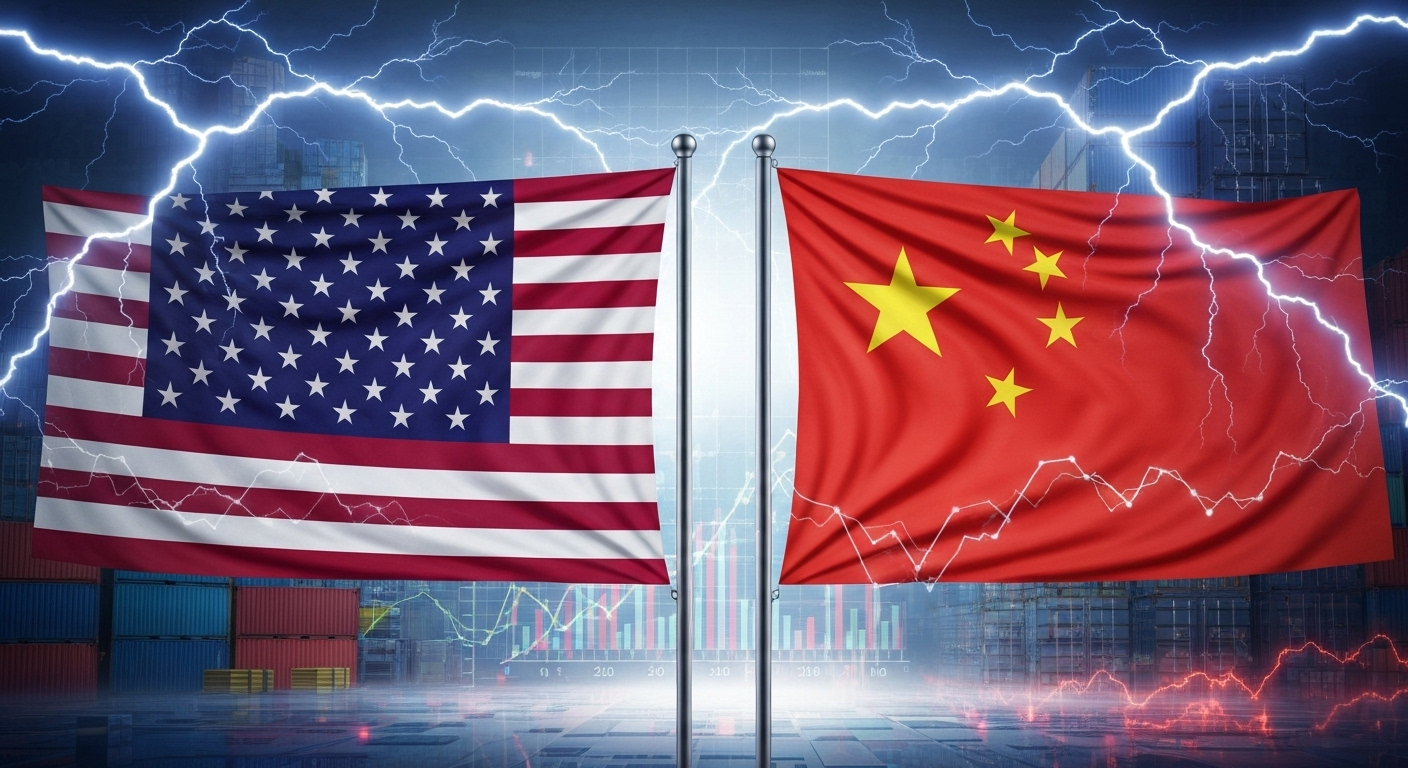Key Highlights
- The Federal Reserve has lowered its growth projections for the US economy, citing concerns about President Trump’s tariffs.
- The central bank now expects the economy to grow by just 1.7% this year, down from its previous forecast of 2.1%.
- The Fed also expects inflation to rise to 2.7% this year, up from its previous forecast of 2.5%.
- Despite the downgraded forecasts, the Fed kept interest rates unchanged at its latest meeting.
- The decision to hold rates steady was widely expected, as the Fed wants to see how the trade dispute plays out.
Introduction
The Federal Reserve Bank has a key part in forming the economy in the United States. It does this by making choices about monetary policy that impact financial institutions. These choices affect interest rates, inflation, and how the economy grows. Recently, news from the Fed has impacted financial markets. This is because the central bank changed its view on the US economy, leading to criticisms from President Trump and some Republicans in Congress. Worries about trade problems and a slow global economy have led the Fed to lower its growth forecasts. This shows they are thinking carefully about the future.
Understanding the Federal Reserve’s Decision
 The Federal Reserve has lowered its growth forecasts. This decision comes during a time of uncertainty about the economy. The trade conflict between the United States and China is ongoing. Also, there is slowing growth around the world. These issues have made businesses less confident and have affected investments. This has led the central bank to have a more cautious view.
The Federal Reserve has lowered its growth forecasts. This decision comes during a time of uncertainty about the economy. The trade conflict between the United States and China is ongoing. Also, there is slowing growth around the world. These issues have made businesses less confident and have affected investments. This has led the central bank to have a more cautious view.
The Federal Reserve is also worried about rising inflation. Recently, inflation has stayed low. However, there are signs that it might be increasing. The Fed looks at the Personal Consumption Expenditures (PCE) price index as its main measure of inflation. This index has been going up in recent months.
The impact of Trump’s tariffs on growth projections
The trade policy from the Trump administration, especially the tariffs on imports from China, has made the economy more uncertain. The Federal Reserve Bank and the OECD have noted that these tariffs are clearly affecting the economy. As a result, they have lowered their growth predictions.
Businesses are facing higher costs because of these tariffs, which they are passing on to shoppers through increased prices. This could reduce consumer spending, which is important for economic growth. Moreover, tariffs have upset supply chains, adding more problems for businesses.
The Federal Reserve Bank will keep a close eye on the changing trade situation through its branches, such as the Federal Reserve Bank of San Francisco. They will look at how this affects their monetary policy. The full effects of the tariffs on the economy will depend on how long and how severe the trade conflict lasts, along with how businesses and consumers react.
Comparing past and present growth forecasts
Examining past and present growth forecasts provides valuable context for understanding the Federal Reserve System’s current outlook. The Bureau of Labor Statistics (BLS) tracks and publishes a range of economic data, including historical growth figures. By comparing past forecasts with current projections, we can gauge the extent to which the economic landscape has shifted.
| Period | Previous Forecast | Current Forecast |
|---|---|---|
| 2025 | 2.1% | 1.7% |
| 2026 | 2.0% | 1.8% |
As the table illustrates, the Federal Reserve has significantly downgraded its growth forecasts for both 2025 and 2026. This downward revision reflects the growing uncertainty surrounding the trade dispute with China and its potential impact on the US economy. The Federal Reserve will remain vigilant in monitoring economic developments and adjusting its forecasts as needed.
Conclusion
In conclusion, the Federal Reserve is being careful by lowering growth outlooks due to uncertainties such as Trump’s tariffs. When we look at past and present predictions, we can see that economic conditions are important for understanding future expectations. It’s key to know how tariffs affect the economy since it helps us look at growth forecasts and possible signs of a recession. Keep yourself updated and watch economic signals to handle these changes better. If you want to understand these complicated issues, check our FAQ section for detailed information.
Frequently Asked Questions
Why is the Fed projecting slowing growth?
The Federal Reserve Board, in conjunction with the federal open market committee, has chosen to lower growth forecasts. This decision is based on the latest economic data. Concerns about trade policies and slow growth in the world economy have made the Federal Reserve more careful with its monetary policy. This careful approach is shown in the changes made to reserve balances.
How do tariffs affect the economy, inflation, and growth projections?
Tariffs are an important part of trade policy. They can affect economic growth by raising the cost of imported goods. This could lead to higher prices for both consumers and businesses in the United States, from San Francisco to New York. As a result, this may reduce consumer spending and slow down economic growth.
What are the potential signs of a recession in the current economy?
A recession, according to the Federal Reserve Act, is shown by a long period of economic drop. The central bank, including the New York Fed, pays attention to certain key signs. These signs include a decrease in GDP, an increase in unemployment, and lower consumer spending.




